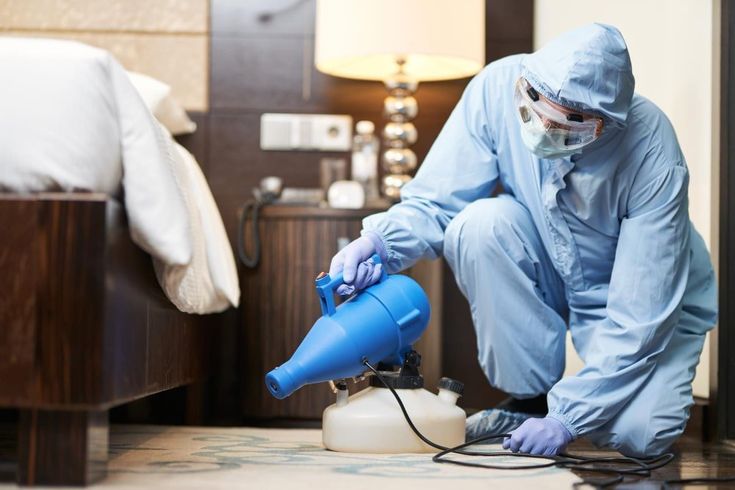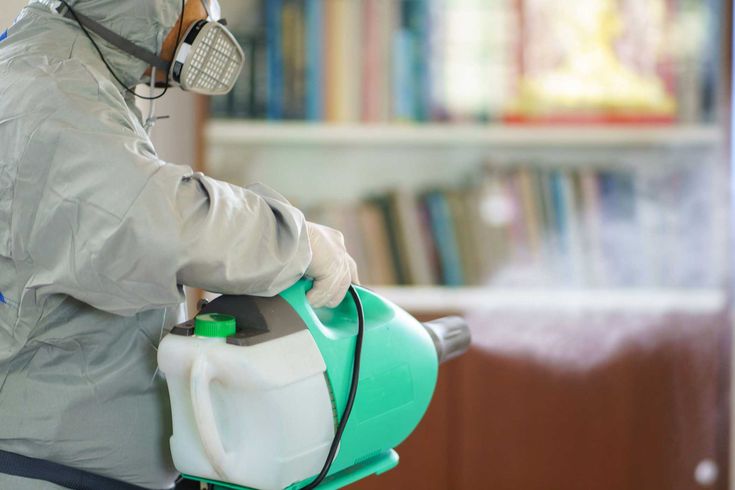
In recent years, the integration of smart technology into agriculture, public health, and urban infrastructure has revolutionized how we approach pest monitoring and management. From AI-powered sensors to real-time data analysis, smart technologies are streamlining detection, response, and prevention methods, offering more efficient and environmentally friendly pest control strategies.
This article delves into the core benefits, types of smart technologies used, and how they’re reshaping the future of pest management across different sectors.
The Growing Need for Smarter Pest Control
Traditional pest control methods have relied heavily on manual inspections, reactive treatments, and broad-spectrum pesticides. While these approaches have been effective to an extent, they often result in overuse of chemicals, delayed responses, and unintended ecological impacts.
The growing population, climate change, and globalization have exacerbated pest-related challenges. New pests are emerging, old ones are evolving resistance, and agricultural lands are under increasing pressure to produce more with fewer inputs. This landscape calls for a smarter, more precise solution.
What Is Smart Pest Management?
Smart pest management refers to the use of advanced technologies like IoT (Internet of Things), AI (Artificial Intelligence), machine learning, remote sensors, drones, and data analytics to detect, monitor, and manage pest populations with precision and efficiency.
These systems provide real-time updates, predictive insights, and targeted control measures, making pest management more sustainable and cost-effective.
Key Smart Technologies Enhancing Pest Monitoring
1. IoT-Powered Monitoring Devices
Internet-connected sensors are being widely used in fields, storage areas, greenhouses, and even urban spaces. These devices collect environmental data—such as temperature, humidity, and soil moisture—that can influence pest behavior.
They also capture real-time pest activity through visual, motion, or pheromone-based detection. These devices communicate via wireless networks, sending alerts to pest control professionals when thresholds are exceeded.
Example: Smart traps that detect and count insect captures can trigger automated alerts for timely intervention, reducing manual trap checks and improving accuracy.
2. AI and Machine Learning for Pest Identification
Artificial intelligence is used to identify pests based on images or movement patterns. Cameras mounted on traps or drones can capture images of insects or rodents, and AI algorithms compare them with vast image databases to identify species with high accuracy.
Machine learning models can also forecast pest outbreaks by analyzing historical data, weather patterns, and environmental changes, allowing pre-emptive measures rather than reactive treatments.
Example: AI-powered smartphone apps can identify plant pests or diseases from a simple photo, helping farmers and homeowners take swift action.
3. Drones and Aerial Imaging
Unmanned aerial vehicles (UAVs), commonly known as drones, are invaluable tools in large-scale pest surveillance. Equipped with multispectral or thermal cameras, drones can cover vast areas in a short time and identify crop stress or pest infestations that might be invisible to the naked eye.
Drones can also be used for targeted pesticide application, minimizing chemical use and protecting beneficial insects.
Example: In locust control efforts, drones help identify swarm movement patterns and direct ground teams to critical zones.
4. Remote Sensing and Geographic Information Systems (GIS)
Remote sensing via satellite or drone-based imagery combined with GIS helps create detailed maps of pest infestations. These spatial data layers enable pest managers to understand how infestations spread over time and space.
This information is crucial for precision agriculture and urban pest control, where zoning and hotspot mapping guide resource allocation.
Example: GIS systems are used in vector control to map mosquito breeding grounds, aiding in disease prevention programs.
5. Smart Traps with Real-Time Reporting
Next-generation traps are equipped with digital counters, image sensors, and environmental monitors. These devices not only capture pests but also provide time-stamped, geo-tagged reports through mobile apps or web dashboards.
They reduce the need for routine field visits and allow pest control operators to respond only when necessary, optimizing labor and response time.
Example: Smart rodent traps in urban infrastructure automatically notify technicians when a rodent is caught, ensuring swift removal.

Advantages of Smart Pest Monitoring and Management
1. Improved Accuracy
Manual pest inspections can be inconsistent and prone to human error. Smart systems collect precise, consistent data around the clock, reducing the chance of missed infestations or delayed responses.
2. Real-Time Data and Alerts
Many smart devices offer instant alerts when pest thresholds are breached. This allows for rapid responses, preventing damage before it becomes widespread.
3. Cost Savings Over Time
Though initial investments in smart technologies may be high, they pay off by reducing labor costs, minimizing pesticide use, and preventing crop losses or structural damage.
4. Sustainability and Eco-Friendliness
Precision targeting of pest control measures means fewer chemicals are used, reducing environmental contamination and protecting non-target organisms.
5. Predictive Analytics
Smart systems can anticipate pest outbreaks by analyzing environmental cues and historical trends, enabling proactive rather than reactive pest management.
Applications Across Industries
1. Agriculture
Smart pest management is transforming modern farming. Precision agriculture uses sensors, drones, and AI to detect crop pests early, monitor field health, and optimize pesticide use.
Farmers benefit from reduced input costs, higher yields, and compliance with eco-certification standards that often mandate minimal chemical usage.
2. Urban and Structural Pest Control
Cities and commercial buildings are increasingly using smart traps and surveillance systems to monitor rodents, cockroaches, and termites. These tools improve hygiene and reduce health risks in dense urban environments.
Smart monitoring is particularly useful in schools, hospitals, and food facilities where discretion and speed are crucial.
3. Public Health and Vector Control
Smart mosquito traps and surveillance systems help track disease vectors like Aedes or Anopheles species. Combined with climate data, these tools aid in predicting outbreaks of dengue, malaria, or Zika.
This technology supports targeted spraying and community alerts in high-risk areas, improving the efficiency of public health programs.
4. Warehousing and Food Storage
Pests in storage facilities can lead to major economic losses. Smart monitoring systems in warehouses detect the presence of insects or rodents in real-time and initiate quick responses, ensuring compliance with food safety standards.
Challenges and Limitations
Despite its many benefits, smart pest management faces certain challenges:
- High Initial Costs: Sensors, AI systems, and drones can be expensive, particularly for small-scale farmers or businesses.
- Connectivity Issues: Remote areas may lack the internet or cellular connectivity needed for real-time data transmission.
- Data Overload: The volume of data generated can be overwhelming without proper data management or skilled personnel to interpret it.
- Maintenance and Calibration: Smart devices require regular maintenance and calibration to stay accurate.
- Privacy Concerns: Especially in urban settings, cameras and data collection devices can raise questions about surveillance and data privacy.

The Future of Pest Management with Smart Technology
The integration of smart technologies into pest management is only just beginning. As costs decrease and devices become more user-friendly, adoption is expected to rise across sectors. Future trends may include:
- Integration with Blockchain: For traceability in organic or eco-labeled produce, blockchain can record pest control actions supported by sensor data.
- Autonomous Robots: Ground robots may soon patrol crops or facilities autonomously, detecting pests and applying treatments with pinpoint accuracy.
- Advanced AI Forecasting Models: These models will get better at predicting pest outbreaks weeks or months in advance based on a wider range of data inputs, including global weather patterns.
- Mobile-First Management Systems: Farmers and pest professionals may increasingly rely on mobile dashboards to monitor, receive alerts, and control devices remotely.
- Collaborative Data Networks: Multiple farms or municipalities could share pest data to create region-wide early warning systems.
Conclusion
Smart technology is revolutionizing the way we approach pest monitoring and management. By harnessing real-time data, AI-driven insights, and precision tools, pest control strategies are becoming more accurate, timely, and environmentally conscious. While challenges like cost and data complexity exist, the long-term benefits of these systems—particularly in improving efficiency and sustainability—are undeniable.
As technology continues to evolve, the future of pest management looks increasingly proactive, data-driven, and intelligent.


